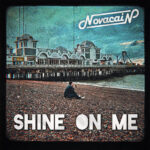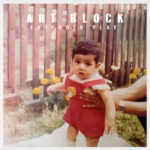- guest post from Shaun of MusicIndustryHowTo.com
Suddenly, out of nowhere, a song idea comes to you.
You jot down your ideas as quickly as possible, before you forget.
You spend some time refining your ideas, and you form them into a song.
This is how many songs end up coming together.
And, while it’s wise to capture your ideas as they come to you, this type of songwriting doesn’t always lend itself to structure.
Now, don’t get me wrong. Sometimes the song that comes to you out of the blue is perfect as it is. If certain artists didn’t throw caution to the wind, we may not have masterpieces like “Bohemian Rhapsody” or “Stairway To Heaven”.
But understanding song structure can only help you when it comes to writing radio hits, memorable anthems, or just songs your fans love.
So, let’s talk about nailing song structure.
What Is Song Structure?
Basically, we are talking about how a song is organized, or how the various sections of a song form a complete whole.
We all know that songs commonly contain sections like intro, verse, pre-chorus, chorus, bridge and the like.
Song structure refers to how you arrange and put these pieces together.
One of the most common song structures in existence is verse, chorus, verse, chorus, bridge, chorus.
How Important Is Song Structure?
Know it or not, all your songs have a song structure, no matter how loose or tentative it might be.
It’s impossible to write a song that doesn’t have a structure.
Even if you were to improvise a song, if it was recorded, we’d be able to go back and map out all the sections.
So, we can’t separate song from structure. Every song has it.
That being the case, wouldn’t you say it would be better to study and gain a better understanding of song structure than not?
Don’t you think you’d have a better chance at writing the way you want to write if you knew how song structure worked?
That’s the importance of song structure, whether you’re in an up and coming band or are an established musician.
Is Song Structure Limiting?
I’ve talked to enough songwriters to know that ultimately, song structure is not limiting.
It might appear that way at first. Artists don’t like putting anything into a box, especially something as personal as songwriting.
But let me give you an example.
I had a friend who was working his way through a composition book. There were various exercises and prompts in the book that had him writing sections of music with certain restrictions, like note choice or chord selection.
He said to me:
“You would think it would be limiting, but it’s not. Having these rules allows me to come up with a lot of creative ideas.”
Exactly.
When you have unlimited options staring back at you, choosing becomes a daunting task because you’ll always be asking yourself whether you made the right choice.
Meanwhile, if someone told you, “write a song with just the chords E, F#m, G#m and A”, you would immediately go to work to find possible progressions, melodic ideas and so on.
This is how the mind works – when it has a problem to solve, it automatically goes to work on solving it.
Inspiration is a good thing, and you should allow yourself to run wild with it. All your ideas should be captured, written down and archived.
But it’s important to understand that song structure shouldn’t – and doesn’t need to – limit your creativity.
What Are The Most Common Song Structures?
Here are some of the most common song structures out there:
Verse / Chorus / Verse / Chorus / Bridge / Chorus
Structure: ABABCB.
Examples: “High And Dry” by Radiohead, “Ain’t Nobody”, a love song for him by Chaka Khan, “Blame” by Calvin Harris featuring John Newman.
Notes: There are endless examples of pop, rock, country and R&B songs with this structure. And, that’s hardly surprising, because it works.
If you were to look at your catalog, you may find that some of your songs follow the same structure, even if you never noticed it before.
The bridge, by the way, is typically used to add a little bit of musical or lyrical interest to the song. If you have a loud chorus, for instance, then you might create some contrast with a quieter bridge.
Lyrically, you might add a little twist in the bridge to create additional interest.
Verse / Pre-Chorus / Chorus / Verse / Pre-Chorus / Chorus / Bridge / Chorus
Structure: Essentially the same as above, but it could be turned into ABCABCDC.
Examples: “Firework” by Katy Perry.
Notes: Although this is basically the same as the ABABCB song structure, the insertion of a pre-chorus section can be powerful and even bring the chorus to new heights.
I use pre-choruses a lot in my music, and that’s often because I have a lot of riffs to fit into one song, and because I have things that need to be said lyrically to set up the chorus.
I wouldn’t advise squeezing in a pre-chorus for no reason at all. Use it to enhance your song.
Verse / Chorus / Verse / Chorus
Structure: ABAB.
Examples: “Bad” by Michael Jackson, “Smooth” by Santana featuring Rob Thomas, “Angels” by Robbie Williams.
Notes: Although basic in structure, many ABAB songs feature underlying intricacies that make them enjoyable.
I honestly think I would have some trouble writing in this structure because if nothing else, I would probably want to throw in an intro, but sometimes simple structures do allow you more freedom for expression.
Verse / Verse / Bridge / Verse
Structure: AABA.
Examples: “What A Wonderful World” by Louis Armstrong, “Rock And Roll” by Led Zeppelin, “We Can Work It Out” by The Beatles.
Notes: A song without a chorus? Honestly, it doesn’t make much sense to me either.
The point is that songs with this structure only have verses and a bridge section, though the verses may contain a refrain that takes the place of a chorus.
Verse / Verse / Verse
Structure: AAA.
Examples: “Kumbaya”, “Mary Had A Little Lamb”, “Bridge Over Troubled Water” by Simon & Garfunkel.
Notes: This is a lot like the previous structure we looked at.
Basically, it’s a song full of verses, with only a refrain as a hook.
While this structure isn’t often used in pop music, you’ve certainly heard it before, as it is used in hymns, children’s songs and folk songs.
Are There Other Song Structures?
Although I’ve covered some of the most common song structures here, there are plenty of others out there.
The previously mentioned “Bohemian Rhapsody” by Queen and “Stairway To Heaven” by Led Zeppelin certainly have unique structures.
I’m not going to tell you what they are, because I think it would be best for you to sit down, listen to the songs and chart out each of them.
If you want to learn how song structure works, you should do this with a bunch of songs.
And, you shouldn’t look up the answers unless you get stuck.
How Should My Song Be Structured?
Getting back to the topic of songwriting, you might be asking yourself how your songs should be structured.
But there aren’t any easy answers to this question. The reality is that you must decide based on what your goals are.
Are you trying to write a radio hit, or will you be pitching your song to an established artist? Then following a common song structure is probably a good idea, though you can still put your own spin on it.
Are you writing songs for your fans? Then write more songs like the ones your fans have told you they enjoy.
Are you writing songs for fun? Then you can go about this however you want.
Are you looking to experiment? You’re free to do as you please – maybe you’ll end up writing a masterpiece that gets well reviewed.
This is but a starting point. Songs are written for a variety of purposes and for different uses, and how you structure a song is going to have a lot to do with its intended use.
Some songs have many sections, none of which ever repeat.
Some songs are short and only have one section.
And, other songs have a long, unexpected coda section (think “Hey Jude” by The Beatles).
Studying songwriting should be a core part of what you do as a songwriter, especially if you want to nail song structure.
Things To Do/Things Not To Do
Before I get into this section, I want to reinforce the idea that when it comes to song structure, there is no write or wrong.
There aren’t a bunch of things you’re allowed to do, and a bunch of things you should never do. That would be silly.
But there are things you should consider based on the type of song you’re writing as well as the goals you have for it.
So, here are some ideas to help you make your next song unforgettable.
Put Your Hook At The Front
There are plenty of songs with a great hook.
What some songwriters aren’t conscious of is that, to get their listeners hooked, they must put their hook at the top of the song.
Only the most dedicated listeners will sit through two minutes of a song just to hear the catchy part.
And, if you want to get your song played on radio, or if you want an A&R rep to listen to your song, you’d better put the hook at the top.
Of course, there are always exceptions to the rule, and if you don’t mind asking your listeners to stretch their ears a little, you can put a hook later in the song.
Keep It Tight
Long, drawn out instrumentals, re-intros and meaningless repetition should all be axed from your song.
There is plenty of time and space to throw in the kitchen sink in a live context. But if you’re putting together a recording, you should keep the song tight.
Your song shouldn’t waste any time getting to the chorus, and preferably it should get there in the first 30 seconds.
Again, this is good advice for writing radio-ready music but if your band is known for long instrumentals and many sections of music, you should stick to what’s already working.
Keep It Simple
There’s a reason double choruses are popular. It’s because they help listeners remember the song.
The catchier the song, the easier it will be for them to remember it.
Repetition is a powerful tool. Just don’t abuse it. I, for one, find certain Rhianna songs (such as “Rockstar 101”) far too repetitive, even for pop radio.
Simple is not bad, especially if you’re looking to appeal to a large audience.
Again, if you don’t mind challenging your listeners, and you’ve earned it, feel free to disregard this advice.
Other Benefits To Learning Song Structure
There are benefits to understanding song structure outside of songwriting.
Here are a few worth knowing about:
You Can Learn Songs Faster
If you’re a session player or if you’re in a band that’s constantly having to learn new songs, knowing song structure can only help you.
One aspect of learning songs is knowing the arrangement inside and out, and if you can quickly identify how a song is structured, you can fast track the learning process considerably.
You Can Follow Along With Sheet Music & Lead Sheets
Sheet music and lead sheets sometimes have sections separated by name (verse, chorus, bridge, etc.) or by alphabetical characters (A, B, C, etc.).
So, if you’re in a situation where you’re playing from written music, you can easily see how the song is structured.
You Can Help Others Understand The Music Better
If you know song structure, you can easily show others how it works.
This could prove helpful if you end up teaching music, or if you’re playing in a band where the musicians don’t know what the various sections of music are.
Song Structure For Beginners, Final Thoughts
I tend to think of songwriting as a muscle, and muscles need to be exercised.
The more you do it, the better you will get at it.
So, whether you’re pitching songs, trying to write the next radio hit, or just writing for fun, just keep at it.
Don’t get stuck on one song. Keep writing more.
You will improve with practice.










Maria
Best Article written, simple right to the point. And encouraging, it’s hard making music on your own so having this to read over is useful. Thanks